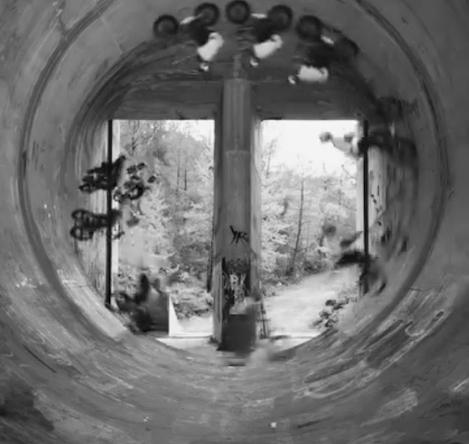Zillow Turns Bearish: What a Housing Price Dip Really Means for Investors
Zillow just made a headline-grabbing move — shifting its housing market forecast from modest growth to a projected national decline in home prices over the next year. It’s a notable change from a company that’s usually on the optimistic side of market outlooks, and naturally, it has investors asking: Should I be worried? Or is this actually a buying opportunity?
Let’s dive into what this new forecast means and why the sky isn’t falling — in fact, this could be the opening long-term investors have been waiting for.
From Slow Growth to a Slight Dip
Zillow’s outlook has cooled steadily in 2025. Back in January, they were still projecting a 3% price increase. By February, that dropped to 1.1%. Then just 0.8% in March. Now? They’re calling for a -1.9% decline in home prices between March 2025 and March 2026.
While that sounds dramatic, a ~2% dip is more of a soft correction than a collapse. Historically, it’s well within the normal range of market movement — and much less severe than past housing downturns.
Why Zillow Adjusted Its Forecast
Two factors are driving the shift:
- A jump in housing supply
- Persistently weak demand
New listings have risen 15–20% year-over-year, adding much-needed inventory — but also putting downward pressure on prices. At the same time, mortgage rates remain in the high 6% to 7% range, which continues to dampen affordability and buyer enthusiasm.
In other words, we’re not seeing panic — just a slow, steady cooldown.
Zillow’s city-level data adds more context:
- The Northeast may still see positive growth
- Most markets are flat or moving slightly up or down (±2%)
- It’s a regional mixed bag, not a broad downturn
What Other Experts Are Saying
Zillow’s call stands out for its negativity, but it’s not the only voice in the room. Other major players are still projecting modest price increases:
- Fannie Mae: +1.7%
- Wells Fargo: +3% (Case-Shiller Index)
- J.P. Morgan: +2–3%
So, Zillow’s forecast may be on the bearish side, but it still falls within a reasonable range — especially if you, like many of us, already expected a flat-to-soft market in 2025.
Should Investors Be Concerned?
That depends on your strategy. For short-term speculators or flippers? Sure, soft prices can complicate exits. But for buy-and-hold investors focused on long-term value and cash flow? This is the kind of environment that creates opportunity.
- Less competition
- Negotiation leverage
- Motivated sellers
- Discounts you couldn’t find in 2021
When prices stall or slip slightly, savvy investors get busy — because value is made on the buy.
My Personal Strategy in This Market
Right now, I’m actively looking for properties I can buy 2–4% below market. That gives me downside protection while locking in long-term value. My focus is on:
- Rent growth potential
- Zoning or legal upside
- Value-add improvements
- Location in a “path of progress”
If I find 2–3 of those qualities in a deal, I’m moving forward — even if home prices dip another percent or two. I’m investing with a 10–20 year outlook, not trying to time the next few months.
Final Thoughts: Is a Dip Really Bad News?
A national forecast of -1.9% sounds dramatic — but in context, it’s a healthy market recalibration, not a red flag. There’s no widespread distress, no crash on the horizon, and no flood of forced selling.
So no, this isn’t 2008 — and for serious investors, that’s a good thing.
If you’ve been waiting for a more favorable market to enter or expand, this might be your moment. The frenzy is over. Conditions are softening. And while others sit on the sidelines, you have the chance to buy smart and build for the long haul.
Because flat markets aren’t the end of growth — they’re where the next chapter begins.
In the previous post: “Is Now a Better Time to Invest in Real Estate Debt or Equity?“
Zillow Turns Bearish: What a Housing Price Dip Really Means for Investors

Has the U.S. Housing Market Finally Begun to Thaw After the Pandemic?
It seems like the housing market might be showing signs of life. According to a recent report from Redfin, pending home sales in early October have seen their largest year-over-year rise since 2021, with a 2% increase in the four weeks ending October 6.
This news is likely to be welcomed by real estate investors who have felt the market has offered limited opportunities over the past few years. However, it’s important to take a cautious approach—one promising statistic doesn’t necessarily indicate a broader trend.
Is the Housing Market Truly Recovering?
Let’s explore the different factors at play.
Interest Rate Reductions: A Critical Factor or a Red Herring?
The Redfin report links the surge in pending sales to the Federal Reserve’s much-anticipated rate cut announcement in mid-September. According to Redfin, this announcement prompted buyers to re-enter the market in late September, despite mortgage rates having already been falling for weeks before the cut.
This psychological boost is crucial. Although buyers were aware of the falling rates beforehand, many seemed to be waiting for a formal signal to act. This could be attributed to a lingering fixation on the ultra-low rates of 3% to 4% that buyers enjoyed before 2022.
Any rate cut announcement serves as a nudge for prospective buyers, making them feel that now might be the right time to purchase, even if mortgage rates had been decreasing already. In an unstable mortgage market, such announcements hold significant influence.
However, mortgage rates are just one piece of the puzzle when analyzing housing market performance. As noted by Investopedia, the real estate market is driven by four primary factors: interest rates, demographics, economic conditions, and government policies.
Demographics: Shaping the Market
During the pandemic, demographic shifts had a profound effect on U.S. real estate, with major population movements like the Sunbelt migration fueling booms in cities such as Phoenix and Austin, which later became unaffordable for many.
Age is another key demographic factor, and the millennial generation’s pent-up demand continues to be a driving force behind the rise in home purchases. Despite the challenges of the past few years, millennials who have longed to become homeowners are now entering the market in greater numbers, as more properties become available.
Rising Inventory: A Sign of Stabilization
A key factor contributing to the market’s stabilization is the growth of housing inventory over the last year. The pandemic had a significant impact on the availability of homes, with sellers hesitant to list properties due to COVID-19 restrictions and, later, higher mortgage rates.
Some homeowners, particularly those upgrading to larger homes, found it financially challenging to sell and take on higher mortgages. Others, however, simply chose to wait for a more favorable market.
Although the latest Realtor.com report shows that inventory remains down by 23.2% compared to pre-pandemic levels, we are seeing an upward trend. For instance, new listings have been rising since last year, with a 5.7% year-over-year increase for the four weeks ending October 6.
As of September 2024, some states have even surpassed their pre-pandemic inventory levels, including Tennessee, Texas, and Idaho, with others, like Washington, close behind.
Vulnerabilities in Certain Regions
However, not all regions are showing positive signs. For example, some areas, particularly those affected by extreme weather, have seen inventory spikes not because of market recovery, but due to homeowners trying to offload damaged properties they can’t afford to repair.
For instance, regions like Florida and North Carolina, hit by hurricanes, have experienced increases in home listings, but these may reflect a response to climate-related challenges rather than market health.
Opportunities for Investors
Investors should be discerning when choosing markets, focusing on regions where inventory is growing due to increased home construction rather than climate-related distress. States like Idaho, Utah, North Carolina, and Texas, which are building new homes, offer potential, though caution is needed in areas prone to natural disasters.
The Midwest and Northeast, meanwhile, still face significant challenges in recovering to normal market conditions. These regions have lower rates of new construction, meaning inventory remains scarce, which could present both opportunities and difficulties for investors.
The Bottom Line
The U.S. housing market is showing signs of recovery, but the situation remains complex and varies by region. Interest rates play an essential role in unlocking the market, but investors should also consider other critical factors, such as homebuilding trends, climate risks, and government policies. While the market is heading in the right direction, it’s crucial to examine regional differences carefully before making investment decisions.
In the previous post: “Is Now a Better Time to Invest in Real Estate Debt or Equity?“







